Scroll down this page to find;
- Information that will help you before your surgery
- Leaving hospital and going home
- Discomfort and Pain
- Posture and positioning
- Exercises after your operation Day 1-7
- More advanced exercise after Day 7 onward
- Seroma
- Cording
- Altered Sensation in your armpit or arm
- Activity and lifting
- Lymphoedema
- Driving
- Feelings and emotions
What is my surgery?
Mastectomy is removal of the breast and may involve axillary node clearance or just sampling of the lymph nodes.
There are many different ways to reconstruct the breast and your surgeon will have discussed the right option for you.
Implant with dermal sling, Strattice(dermal matrix), tissue expanders, Latissimus Dorsi flaps
Breast reconstruction can be completed immediately following mastectomy or delayed following completion of your treatment. Your surgeon will have chosen the option which is most suitable for you and your diagnosis
Reconstruction surgery can involve insertion of implants. This may be by tissue expander, by insertion of an extra piece of tissue into the muscle of the chest wall called a dermal sling or strattice (dermal matrix). The implant may be positioned in front or behind the muscle.
Reconstruction can also use one of the back muscles called Latissimus Dorsi to create a breast.
As reconstruction is a large surgery, you will be required to stay in hospital for at least one night.
What to wear
Before you come in to hospital for your operation think about the clothes that you will want to go home in. Loose fitting nightwear and clothing, with front fastenings, may be easier and more comfortable to wear, both to go home in, and during the first few days after your operation.
A well supported, non-underwired but comfortable bra is best. It would be ideal to be front fastening, with adjustable straps, and be a bigger cup size to allow for any swelling. To reduce the risk of infection 2 bras would be appropriate, one to wash and one to wear.
Your breast care nurse can give you advice on bras.
![IMG_1356[1]](http://yoursurgeryandrehab.co.uk/wp-content/uploads/2017/05/IMG_13561-225x300.jpg)
Leaving hospital and going home
You must not drive yourself home from hospital but you do still need to wear a seatbelt as a passenger.
You can use the seatbelt normally if that is comfortable. However if you need to cushion your wound for comfort on the journey home, try a small pillow placed across your chest.
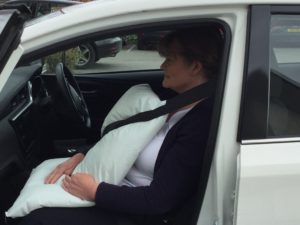
Discomfort and Pain
Discomfort, bruising and some pain is common after any operation and you will be given a small supply of pain relief to take home with you. You can buy simple pain relief from your local chemist or supermarket, but if you need something stronger you should contact your GP once you are at home.

- It is very important to take the pain relief that you have been prescribed regularly especially in the first 2-3 weeks after your operation.
- If you take the pain relief regularly you will keep it topped up rather than allowing any pain to break through.
- Pain relief will allow you to move more freely and without discomfort. It will help when you are completing your physiotherapy exercises in the day and can also give you a better nights sleep.
- Constipation is often a side effect of certain stronger pain relief. If constipation is a problem, drink plenty of fluids, make sure you have enough fibre in your diet, and consider using a gentle laxative available from the chemist. If you are struggling with this talk to your pharmacist.
- Some people do not experience pain initially after surgery, however, as your nerves awaken it can become more uncomfortable. This is often in the 2nd week and is a normal part of the healing process.
- It is common to feel sudden but short shooting discomfort and pain for no reason. This is the nerves settling down, and will settle over the next few weeks.
Posture
It is very important to look after your posture following your operation. It is common to feel that you need to be protective of your wounds however, it is vital to try and sit, stand and walk normally. This will help you avoid getting stiffness in your shoulder, neck and elbow and limit any future problems.
This picture shows poor shoulder posture.
Here is a really simple exercise to help your posture. Try this little and often during the day.
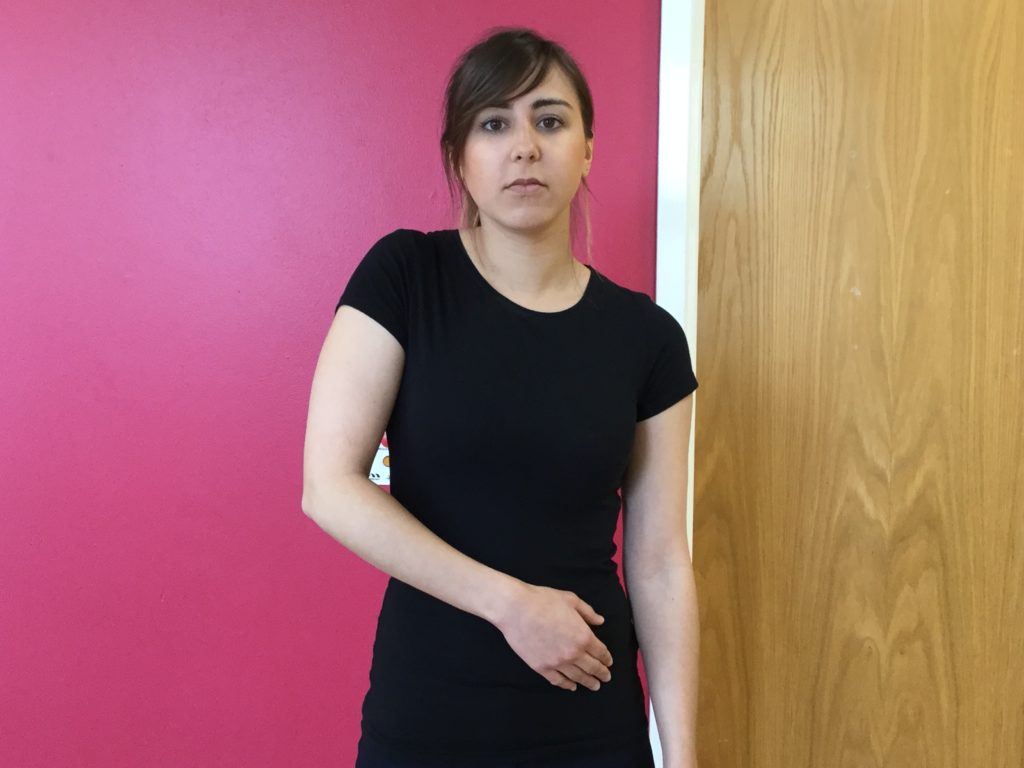
Posture Correction Exercise
- Stand tall, imagining you have a string pulling you up from the middle of your head
- Gently lower your shoulders down towards the floor.
- Gently take your shoulders backwards, bringing your shoulder blades together
- Hold for 5 seconds then relax. Try to complete this 10 times.
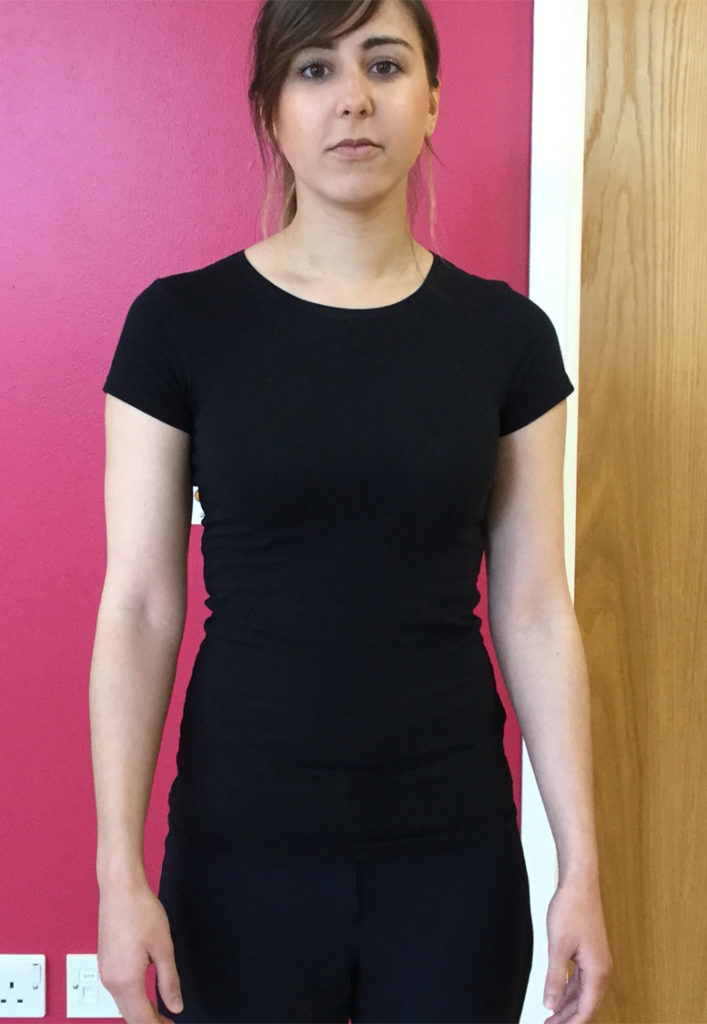
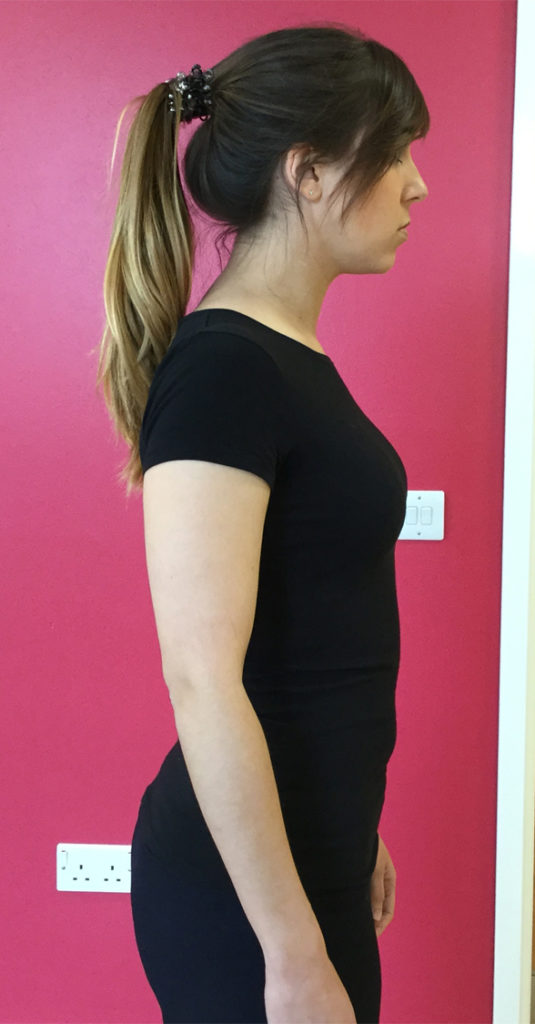
Positioning in bed
It can sometimes be a little difficult to find a position in bed where you can be comfortable.
When lying on your back it often helps to rest your affected arm on a pillow. You are safe to lie on your side when you feel able to. Using a pillow in front to rest your arm often helps.
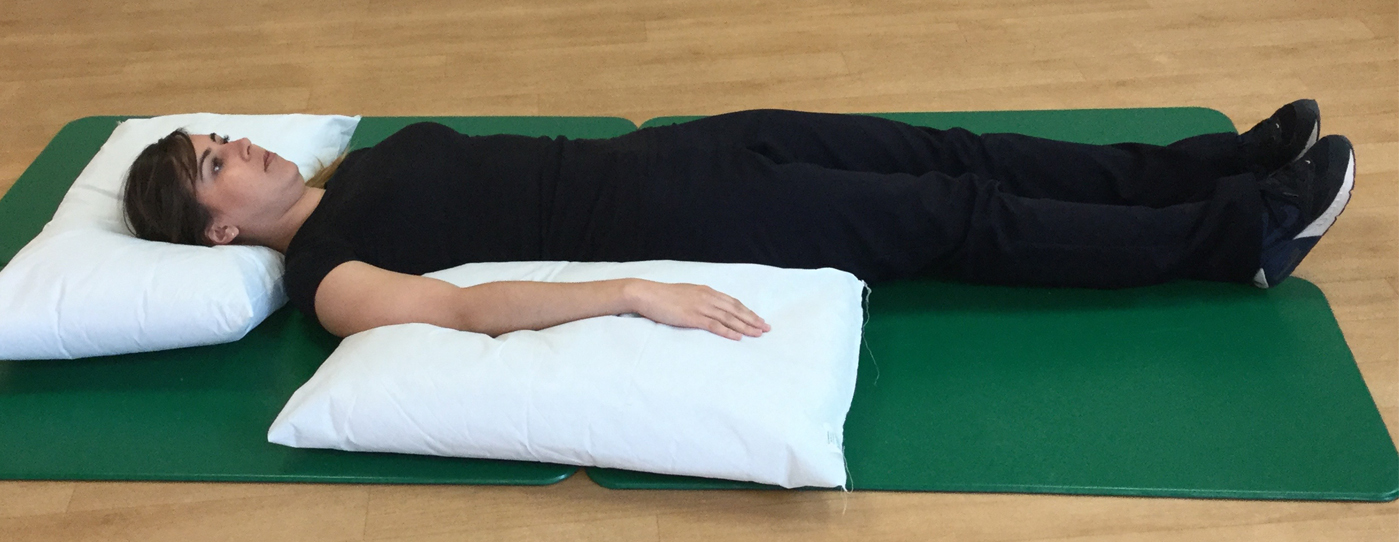


Positioning on a chair
It can sometimes be a little difficult to find a position in bed where you can be comfortable.
When lying on your back it often helps to rest your affected arm on a pillow. You are safe to lie on your side when you feel able to. Using a pillow in front to rest your arm often helps
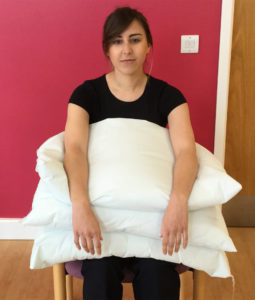
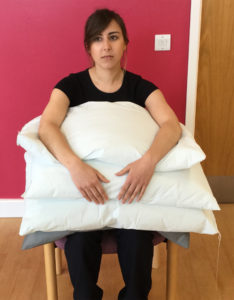
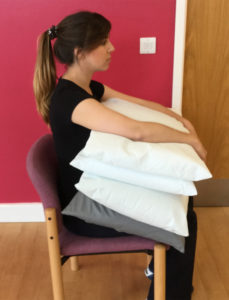
Exercises after your operation Day 1-7 (and whilst drains are in)
Immediately following your surgery, it is recommended that you complete regular breathing and circulation exercises. This includes taking several deep breaths every hour to keep your lungs clear. Coughing and sneezing will do no harm to your wound.
Circulation exercise
Try not to sit or lie with your legs crossed, and whilst you are not moving as much as normal, try these foot and ankle exercises to keep your circulation working and reduce your risk of blood clots
Moving your feet up and down and circling your ankles regularly 5 times each way every hour
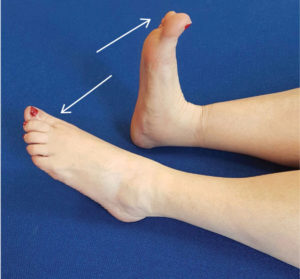
Shoulder Exercises for Days 1-7 and whilst drains in (and if drains needed longer than 7 days)
Firstly remember not to lift your elbows above shoulder height for the first 7 days and while drains are in
Do your shoulder exercises 3-4 times every day to prevent your shoulder becoming stiff. This will help with healing, and reduce the risk of complications.
All the exercises should be done within the limits of your pain. It is common to feel a pulling sensation when performing these exercises and some temporary discomfort afterwards. Gentle exercise will do no harm and is very important.
You should start your exercises with a posture check. You should be sitting or standing up straight, with your shoulders level and relaxed.
Exercise 1: Shoulder Shrugging
Gently lift your shoulders up towards your ears then relax back down.
Repeat 5-10 times
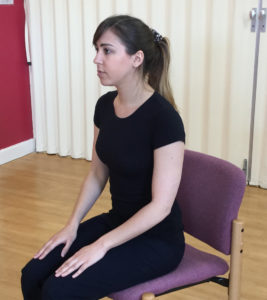
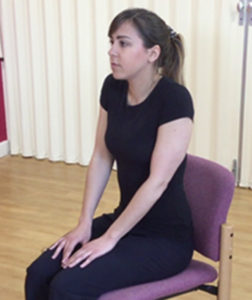
Exercise 2: Shoulder Circling
Gently circle your shoulders forwards, and then circle backwards.
Repeat 5 times each way
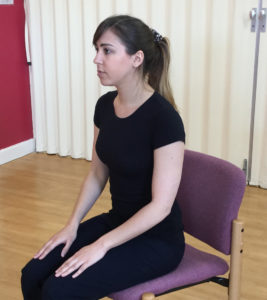
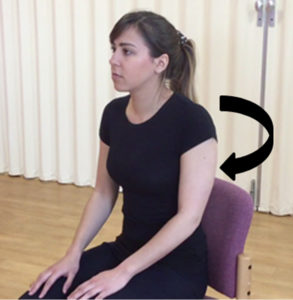
Exercise 3 - Lifting your arm forwards
Bend your elbows to allow your hands to rest on your shoulders. Gently lift your elbows to point forwards. You may feel a pulling sensation however, this is not harmful.
Hold for 5 seconds then slowly lower your elbows back down to the starting position.
Repeat 5 times.
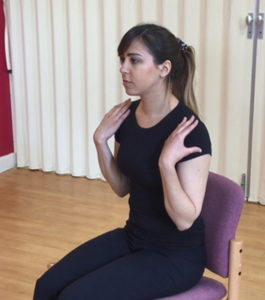
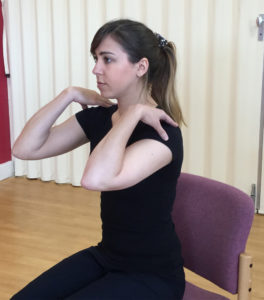
Exercise 4 - Lifting your arm out to the side
Bend your elbows to allow your hands to rest on your shoulders. Gently lift your elbows out to the side until they reach shoulder level then lower back down. You may feel a pulling sensation however, this is not harmful.
Hold for 5 seconds then slowly lower your elbows back down to the starting position.
Repeat 5 times.


Exercise 5 - Hands behind your head
Bend your elbows to allow your hands to reach behind your head. Gently push your elbows backwards. You may feel a pulling sensation however, this is not harmful.
Hold for 5 seconds then slowly bring your arms back to the starting position.
Repeat 5 times.
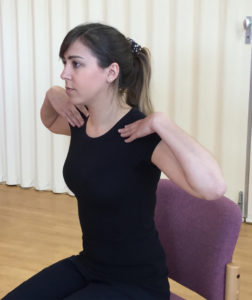
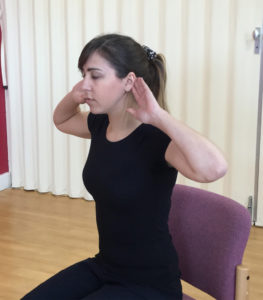
Exercise 6 - Hands behind your back
Bend your elbows to allow your hands to reach behind your back. Aim to reach your hands higher up your back. You may feel a pulling sensation however, this is not harmful.
Hold for 5 seconds then slowly bring your arms back down by your side.
Repeat 5 times.

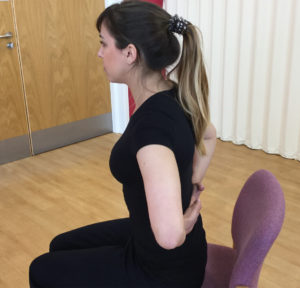
More advanced exercise after Day 7 onwards (drains removed)
These exercises are to be completed from 7 days after your surgery. We recommend that these exercises are completed lying on your back. This can be on a bed with a pillow under your head. You should aim to complete these exercise 3 times daily.
All these exercises should be done within the limits of your pain although it is common to feel a pulling sensation when performing these exercises and some temporary discomfort afterwards. Do not push your movement past the point where you feel a pulling sensation.
Exercise 1 – Lifting your arm forwards
Lift your arms up to point to ceiling and link your hands together. Slowly bring your arms backwards over your head, keeping your elbows straight.
Hold for 5 seconds then return your arms to the starting position.
Repeat 5 times.
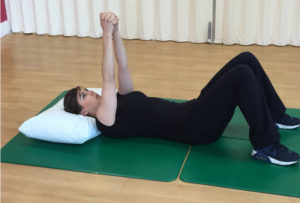
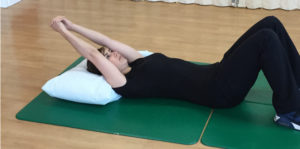
Exercise 2- Lifting your arm out to the side
With your arm resting on the bed beside you, turn your palm to face the ceiling. Slowly glide your arm sideways and upwards toward your ear, keeping your elbow straight. You may feel a pulling sensation across your chest or in your armpit however, this is not harmful.
Hold for 5 seconds then glide your arm downwards to return to the starting position.
Repeat 5 times.
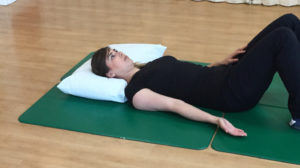
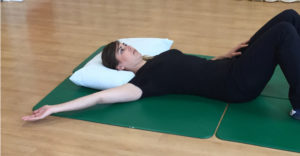
Exercise 3- Hands behind your head
Bend your arms to allow your hands to reach behind your head. Slowly push your elbows backwards. You may feel a pulling sensation across your chest or in your armpit however, this is not harmful.
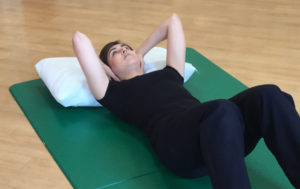
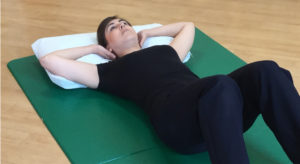
Hold for 5 seconds then slowly bring your arms back to the starting position.
Repeat 5 times.
When you no longer feel a pulling sensation when completing this exercise, remove the pillow from under your head and complete the exercise on a flat surface. You should find this altered position more challenging.
Exercise 4- Arm Circling
With your arm resting on the bed beside you, turn your palm to face the ceiling. Slowly bring your arm out sideways, upwards and across your body to create a small circle. Try to keep your elbow straight during this exercise. You may feel a pulling sensation across your chest or in your armpit however, this is not harmful.
Repeat 5 times, trying to create larger circles each time.
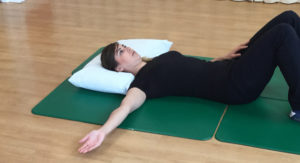
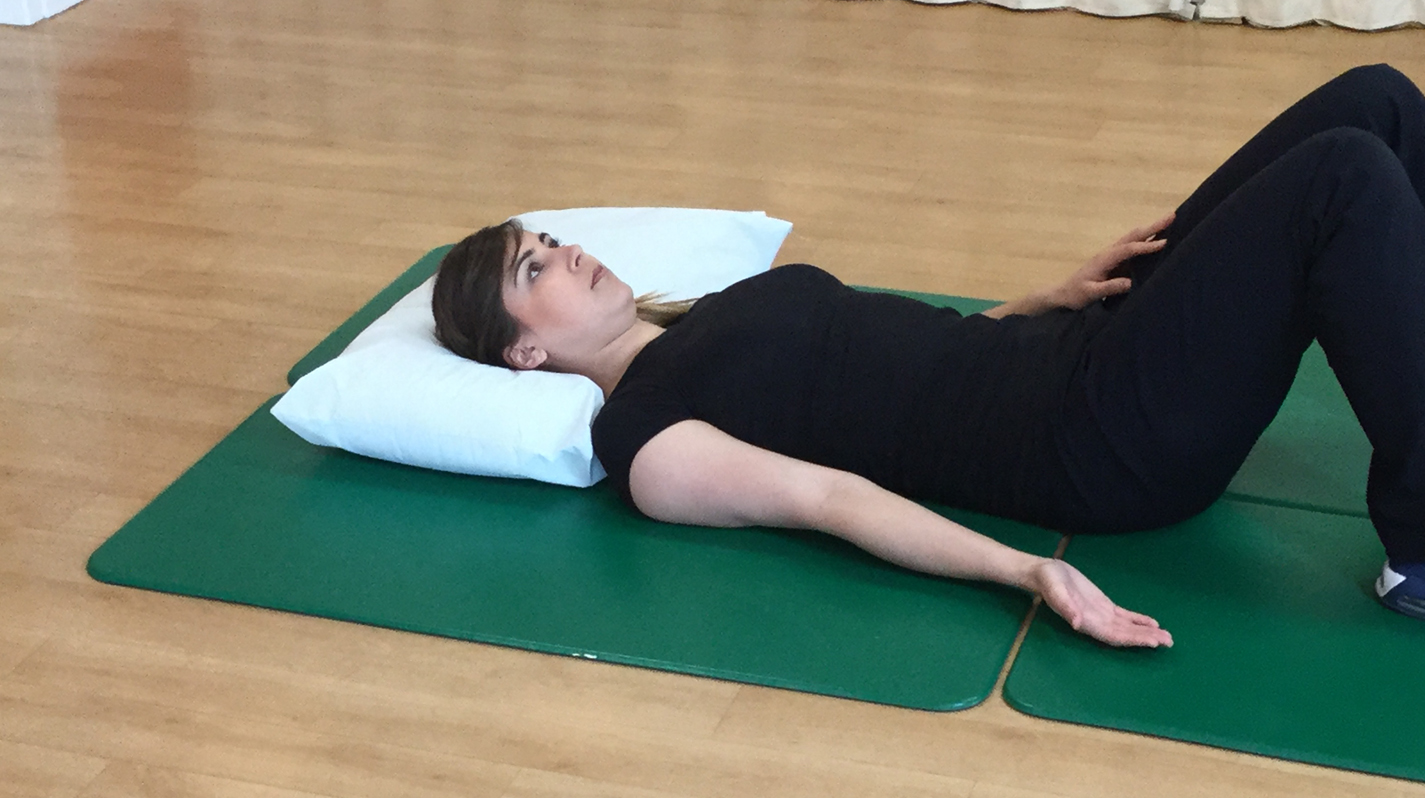
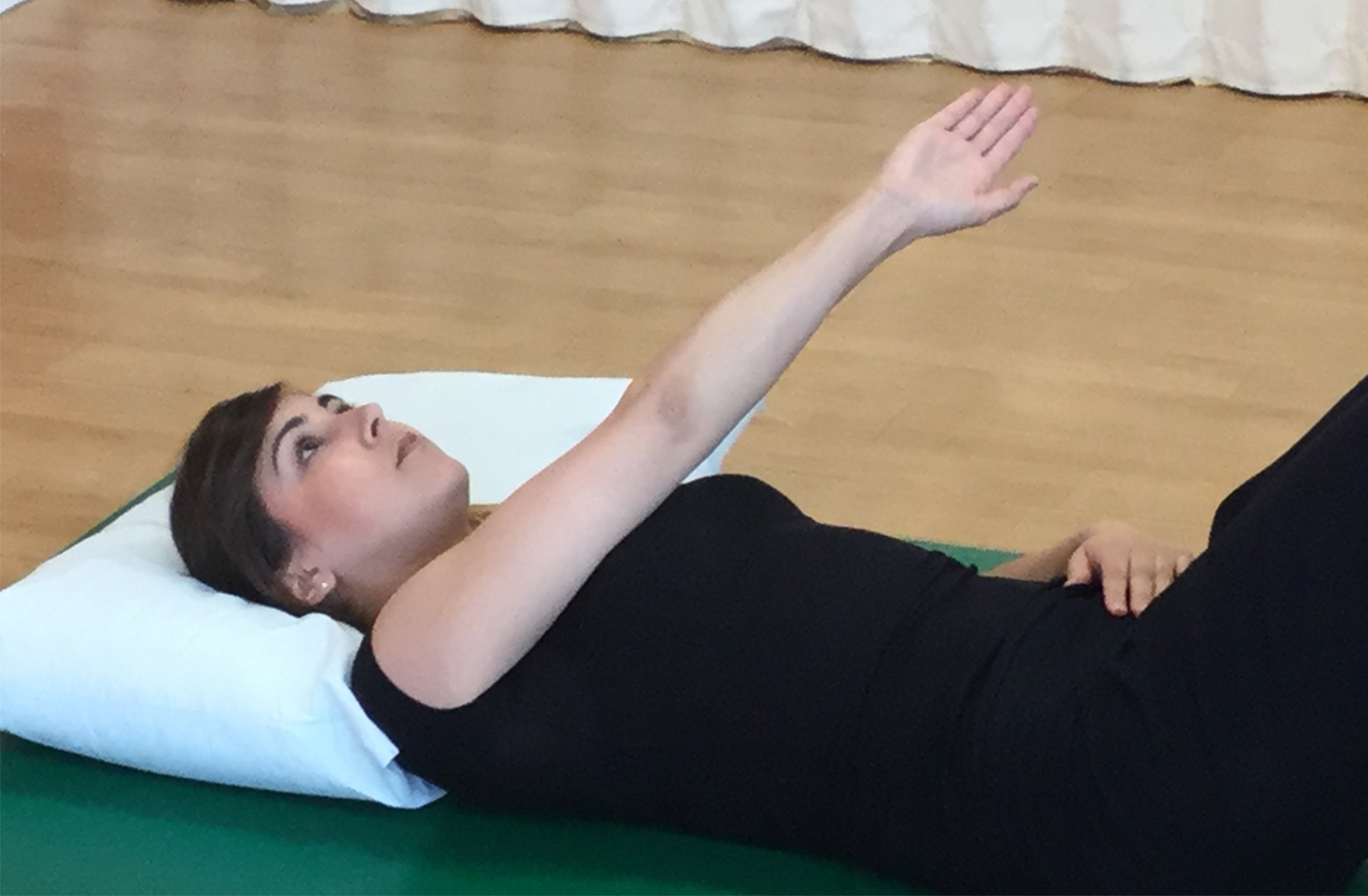
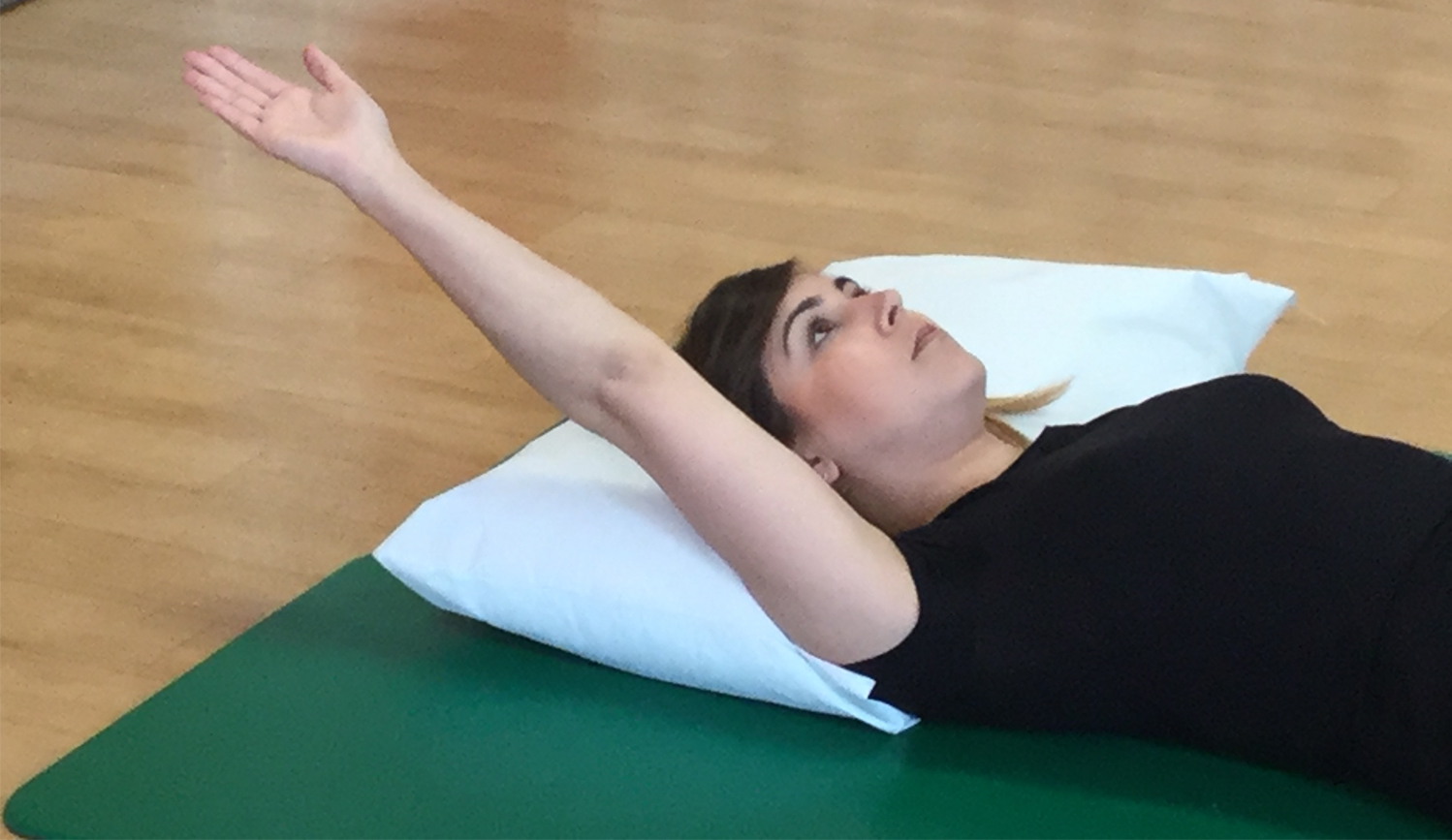
Exercise 5- Wall exercise
Complete this exercise standing facing a wall.
Place your arms in front of you with your fingertips touching the wall. Slowly slide your arms up the wall, keeping your elbows straight. You may feel a pulling sensation across the front of your chest or in your armpit however, this is not harmful.
Hold for 3 seconds then slide arm back down the wall to the return to the starting position.
Repeat 5 times facing the wall.
You should also complete this exercise 5 times facing sideways to the wall to work on the sideways movement of your operated side

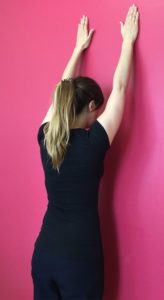
You should slowly step closer to wall as your arm movement improves to avoid bending sideways or bending your back during this exercise.
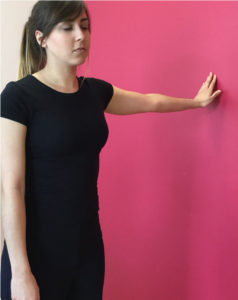

Additional exercise after 4-6 weeks for Latissimus Dorsi reconstruction only
Exercise 1- Knee Rolling
Lying on your back, bend your knees to allow your feet to be flat on the bed. Slowly rock your knees to face one direction as far as you feel able to go. You may feel a pulling sensation across your chest, down your side or into your back however, this is not harmful.
Repeat 5 times in each direction.
Exercise 2- Pelvic Tilting
Lying on your back, bend your knees to allow your feet to be flat on the bed. Gently bring your stomach in and slowly flatten your back against the bed. This is will allow your pelvis to tilt forwards.
Hold for 5 seconds then relax back to starting position.
Repeat 5 times.
Exercise 3- Shoulder Stretching (protraction)
Lying on your back, bend your knees to allow your feet to be flat on the bed. Lift your arms up to point to ceiling, link your hands together and keep your elbows straight. Reach your arms upwards towards the ceiling.
Hold 3 seconds then lower slowly back to starting position
Repeat 5 times
It is expected that you will have full movement at your shoulder approximately 4-6 weeks after surgery.
Should you have any concerns or worries about your exercises please contact the physiotherapists at the Nightingale Centre on 0161 291 4268.
Drains
You may have a drain in following surgery to collect any excess fluid. Some drains are removed on the ward however you may go home with your drain. Here are some tips for going home with drains.
- You are safe to walk with drains in. It may be useful to carry them in light shoulder bag or plastic bag for ease.
- You may need additional pillows at home to help you find a comfortable position during the day and at night.
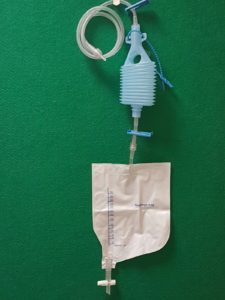
- You should not lift your elbow above your shoulder height whilst the drain is in. You can still reach your head to brush your hair and should complete the physiotherapy exercises below (Days 1-7) as normal.
- Keep a record of how much is drained every 24 hours, and bring this record to your next clinic appointment.
- Your drain will be removed in clinic. Allow your arm to rest following drain removal and do not complete your physiotherapy exercises for the rest of that day. Start back with your exercises the following day.
Seroma
It is common to experience swelling around your surgical site or armpit after your surgery. This is a natural collection of fluid called a Seroma which the body will gradually absorb.
A seroma is not harmful but occasionally becomes very uncomfortable or puts too much pressure on the new wound. If this happens, you will need to contact your breast care nurse (weekdays) or ward F16 (evenings, weekends and bank holidays) to have this excess fluid drained. This is a small painless procedure which may have to be done more than once during your recovery.
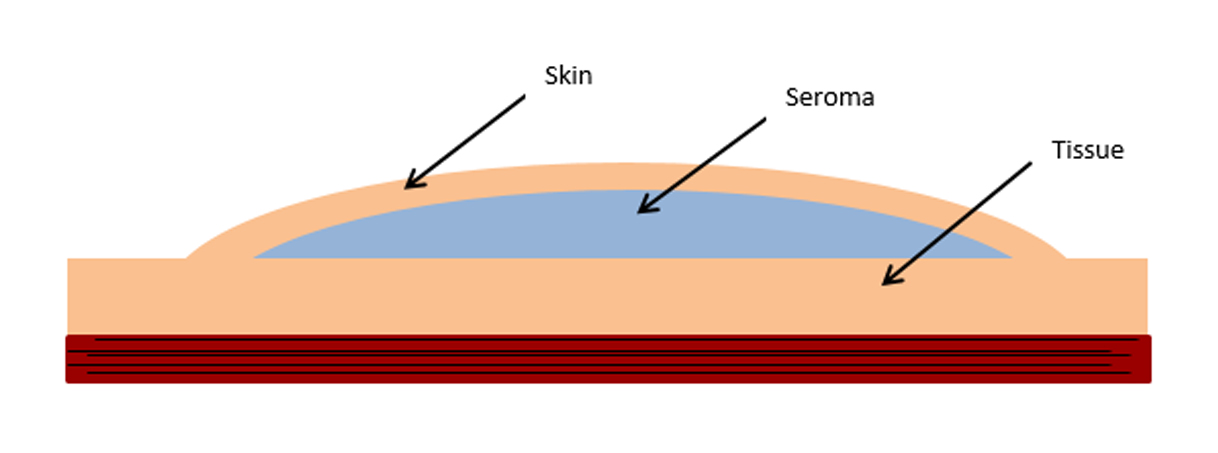
If you have had a seroma drained, please leave your physiotherapy exercises for the rest of that day to prevent the seroma refilling. Start back with your exercises the following day.
Try to reduce any repetitive arm actions that may encourage the seroma to fill more quickly such as sweeping, vacuuming or computer keyboard work. Your breast care nurse may suggest you see the physiotherapist for help if your seroma needs draining frequently.
Over time any old seroma fluid will become firm and solid. This is normal and the body will gradually break it down. A seroma is not lymphoedema and does not cause it.
In the rehabilitation class you will be shown how to massage the seroma and scar by the physiotherapist.
Cording
If you have had some lymph nodes removed, you can sometimes develop a tight feeling when you stretch your arm out in front or to the side. It can feel or like cords or strings in your armpit and arm. This is called cording (or sometimes axillary web syndrome) and may happen several days after your surgery.
Cording is not harmful but may be a little tight and uncomfortable. It will make you want to hold the arm more protectively, but it is important to try not to do this. Rarely, cording can also appear in the abdominal tissues and may pull when you lift your arm.
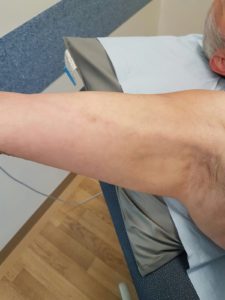
Gentle stretching during your physiotherapy exercises and light massage should help this tightness. You will be shown how to do when you come to the rehabilitation class. However if you are struggling with your exercises please contact the Nightingale physiotherapists on 0161 291 4268 or speak to your breast care nurse for advice.

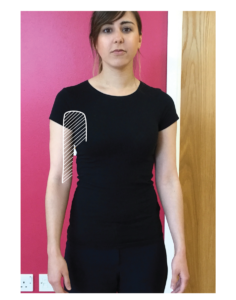
Altered Sensation in your armpit or arm
The nerve that supplies the armpit and the inside upper part of the upper arm lies close to the lymph nodes. After surgery you may experience complete or partial numbness, extra sensitivity or tingling in this area. These sensations are common and should settle with time over the next few weeks.
We will discuss in the rehabilitation class how and when it is safe to remove underarm hair.
Activity and lifting
It is normal to feel tired and low in energy during your first couple of weeks at home, however, we would encourage you to do small amounts of activity as you feel able.
You should aim to get up and move around regularly in the day but also to have regular periods of rest. Getting washed and dressed and light cooking are fine to do, but don’t try to lift anything too heavy with your affected arm.
For the first 3 weeks please do not carry or lift anything heavier than a bag of sugar (approximately 2 lbs/ 1kg) and only carry these items for a maximum of 5 minutes
Avoid heavy and repetitive tasks in the first 6 weeks such as
- Vacuuming
- Sweeping
- Ironing
- Changing duvets
- Moving wheelie bins
- Lawn mowing
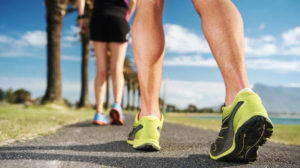
For the first 6 weeks after your surgery, you should limit your amount of repetitive tasks such as ironing, mopping or computer use to short periods only to enable wound healing and your lymphatic system to settle. You may gradually increase the time you spend on these activities over the six weeks from 10-30 minutes as your symptoms allow.
You may have some shoulder discomfort as your arm rebuilds its strength but if your arm starts to ache you should stop, have a rest, and go back to the activity later. Listen to your arm!
Gradually increase your activity levels but do not attempt to lift heavy objects such as shopping, vacuums, watering cans for 3 months following your surgery.
Walking is good exercise, whether it is indoors or outdoors. Be aware of your energy levels though and plan to gradually walk further as you feel able.
Lymphoedema
Lymph is a normal colourless fluid that occurs in the body, in a system of lymph vessels and lymph nodes often called glands. Some patients may develop a persistent swelling of the arm and/ or breast following removal of lymph nodes in the armpit, and this is called Lymphoedema.
The risk of developing lymphoedema is higher if you have had all the lymph nodes removed.
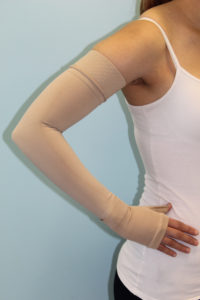
In the first 6-8 weeks after surgery you should avoid heavy or repetitive activity, such as sweeping and vacuuming, to allow your body and lymph system to recover. We do want you to use your hand and arm as normally as possible once you have recovered, however, there are some sensible precautions that you can take to reduce your risk of Lymphoedema. You will be given these precautions in your class, as well as full instruction on skin care massage, hair removal, dos and don’ts and exercise which can help reduce your risk.
Look at the Lymphoedema, How to reduce your risk section on this website for further information.
Driving
You are advised not to start driving for at least 6-8weeks after your surgery. This is due to reconstruction being a large surgery with lots of complicated healing.
When you do start to drive, you will need to make sure you have good arm movement, and be sure that you can control the vehicle. This includes a lot of gear changes, using the handbrake and being able to react in an emergency.

Start with a small journey and gradually increase the distance as you feel stronger.
You are advised to contact your insurance provider to ensure that you are covered following surgery.
Body Image
Remember this reconstruction is work in progress. At this early stage you will have normal swelling and bruising after your surgery and this will take time to settle. This will affect how your reconstruction looks and is not your final outcome. Please talk to your breast care nurse if you have any concerns.
Feelings and emotions
You have just had an operation and it will take you time to recover. You may feel differently about yourself and your body following surgery. Your Breast Care Nurse is always available if you need to talk. The Nightingale Breast Care nurses can be contacted on 0161 291 3113.
In the rehabilitation class we will talk about support in your local area. Please see the support section of the website.
You will attend a class within 4 weeks of your surgery as part of your rehabilitation and treatment.
You will have received a letter inviting you to the class. Please contact us if you need to change the date. At this class, you will be shown your follow on physiotherapy exercises and be given advice on activity and exercise now and in the future. There is also information and advice on skin care, scars, cording, diet and how to reduce your risk of Lymphoedema. This session is an opportunity to ask questions and learn how to access local services in the Manchester area.ts e.g. interpreter. For Class information see the website